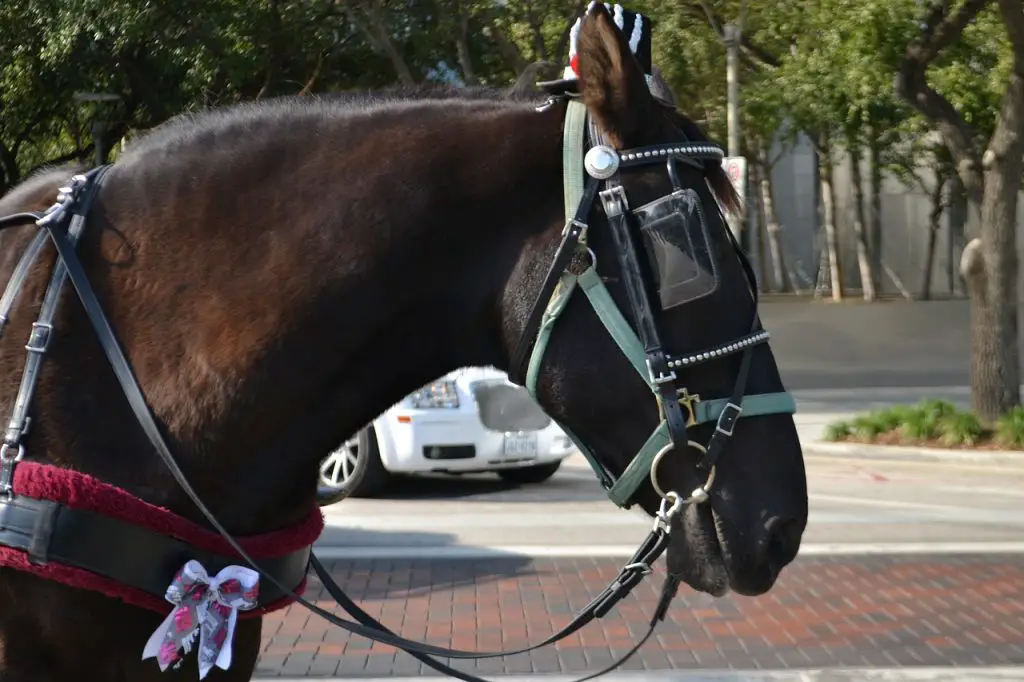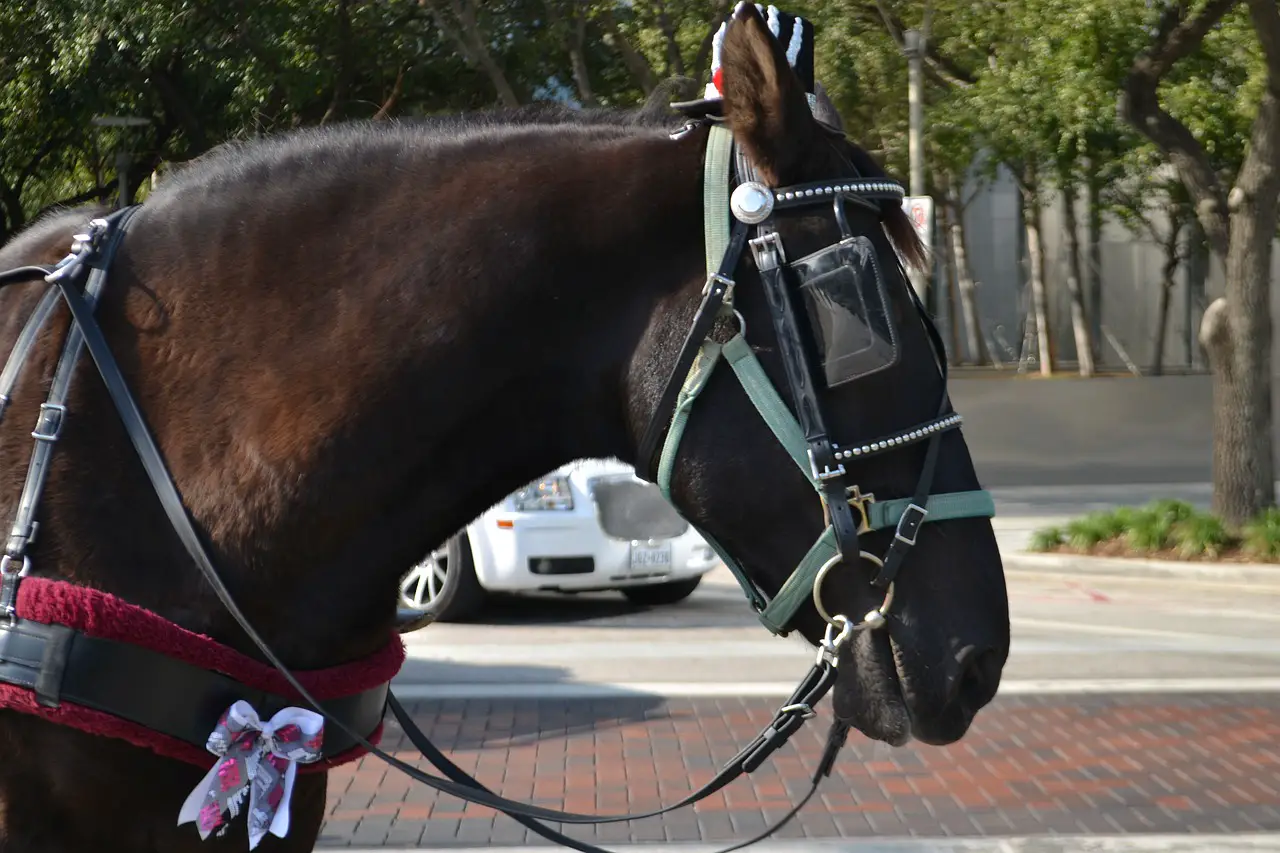Last Updated on February 28, 2022 by Allison Price
The curb strap can be used in conjunction with the horse’s bit. This is how you can make sure that it’s properly adjusted.
A curb chain or curb strap is a good training tool for sensitive horses. This means that you must ensure that the strap is appropriate for your horse and that it is adjusted correctly.
First, imagine how a curb strap can work in conjunction with your horse’s bits. It helps to keep your horse’s bit in place and provides another point of contact when your horse is bridled. The curb strap should not pull back on the shanks or bit if there is no rein pressure. The backward motion of your shanks causes the curb strap to come into play. This is the area of the jaw that lies just below the bulge of your chin. It also serves as leverage for the mouthpiece of the bit.
The curb strap is too tight and doesn’t fit properly. The curb strap on the right is shorter than the one on the left.

The way you adjust the curb strap will determine when it comes into effect. It should not be too tight. Horses will feel the pressure as soon as they lift the reins. Riders adjust the curb strap to activate after the shanks are at 45 degrees.
There are many types of curb straps available. The type that you choose will depend on your ability and your horse’s needs. A curb strap’s severity, like bits, is determined by the skill of the rider. The wrong one can cause severe injuries.
There are many curb straps available, from jointed metal to knotted leather, but the most popular ones are chains or harness leather straps. A curb chain is more robust than a leather curb band. Its severity is determined by the width and spacing between its links.
The curb strap can be adjusted with two fingers. It is adjusted equally on both sides and properly balanced on the horse’s chin.
If a horse is feeling dull or heavy in their bridle, I will use a curb chain. It encourages a softening and lighter response and helps to teach horses how to let go of the bridle. I prefer to apply pressure to the chin of my horse with a light touch, instead of using a heavier bit. To prevent my horses from pinching their skin, I use a flat-chain with multiple crossovers in each link. A harness leather curb strap with a buckle at each end for adjustment is my choice if I need less pressure.
Check to make sure your curb strap fits between your horse’s jaw and two fingers. Also, ensure it is adjusted equally on both ends. You should ensure that the curb chain is not bent and that it rests flat against your horse’s jaw. Comparing the fit of the curb strap in page 32 with the photos on page 31 will show the difference between one that is too tight and one that fits correctly.
The curb strap should not pull back on the bit’s shanks if there is no rein pressure.
Bobbie Emmons shows top AQHA/APHA contenders at Bobbie Emmons Show Horses, Plymouth, California. She has trained more than 50 reserve and youth APHA world champions, as well as amateur and youth world champions.



